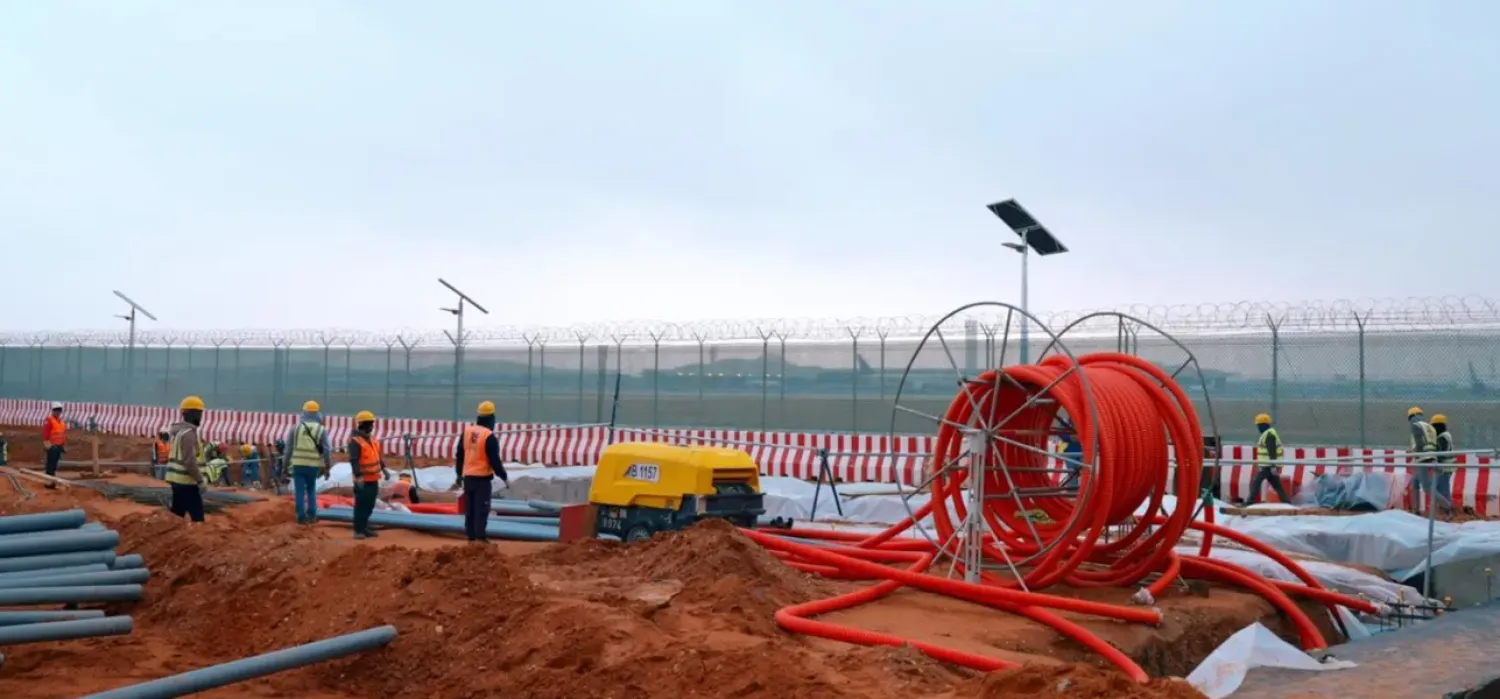The Saudi Cabinet, chaired by the Custodian of the Two Holy Mosques King Salman bin Abdulaziz, approved the draft general agreement to establish the Arab common market for electricity, authorizing the Minister of Energy or his deputy to sign it.
The approval is a step towards activating the project, which is close to operating, after completing most of its technical details.
Arab countries look forward to implementing the project to achieve energy integration and remove obstacles and challenges that prevent access to a trade market for electricity.
They aim to achieve many technical, economic, environmental, social, and political benefits.
- The Arab Common Market for Electricity
According to information issued earlier, the project will improve the reliability of electric power systems economically, enhance operating efficiency, and reduce the fixed reserve ratios for emergency response in the electrical networks for each system separately.
It also aims to increase the dynamic stability of the electrical network and reduce the cost of generating a power unit—electricity, due to direct savings in capital investments resulting from postponing the establishment of new production stations.
The deal will also achieve financial revenues for the transit countries where the electrical interconnection lines pass. It will help utilize all available energy sources, especially renewable energies, reduce emissions, and exchange technical, financial, and legal experiences.
- The efficiency of surplus electricity
Economic professor at King Faisal University, Mohammed al-Qahtani, indicated that the project would raise the spending efficiency on electricity surpluses and ensure their financial benefit.
Qahtani told Asharq Al-Awsat that the project would help accelerate the development in Arab countries that suffer from power shortages, adding that it would activate the economic unity between the states, including the inter-trade exchange.
The expert pointed out that some Arab countries that suffer from power outages will benefit from the surpluses in other countries, which will meet their development needs and provide soft loans for electricity.
It will also achieve economic revenues for other countries with electric surpluses, leading to a common market that will benefit all parties.
- The Role of Saudi Arabia
Qahtani stated that Saudi Arabia, due to its pivotal economic and central role in the Middle East, will be one of the most critical countries in linking electrical surpluses between the Gulf countries rich in excesses and the rest of the Arab countries.
He noted that such projects that the Saudi government constantly announces confirm the Kingdom's progress following Vision 2030 towards boosting its role and economic local, regional, and international position.
- The Arab Common Market for Electricity Agreement
It is a document detailing the obligations specified in the Memorandum of Understanding and the General Agreement and covers the commercial aspects of the market.
It determines the roles and responsibilities of each party, defines services and procedures for that, and calculates electricity quantities.
- Consumption
According to recent studies, the growth rates of electric energy use in Arab countries vary according to the nature of use and the availability of energy sources in each country.
Statistics indicate a 36 percent increase in the average per capita electricity consumption in 2017, bringing the average share of the Arab citizen to 3,000 kilowatt-hours.
The Arab demand for electric energy increased 6.2 percent on average between 2000 and 2010, reaching 655.8 TWh in 2010, while the demand for electric power rose 19.4 percent between 2010 and 2014, reaching about 1166.4 terawatts per hour.
Demand is expected to rise to 1,639 terawatts per hour in 2023 and 2029 terawatts per hour until 2028, according to the Arab Union of Electricity (AUE).









